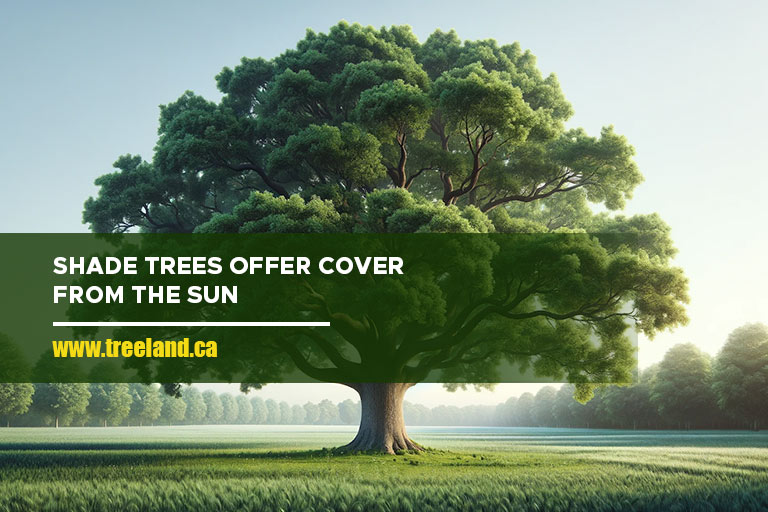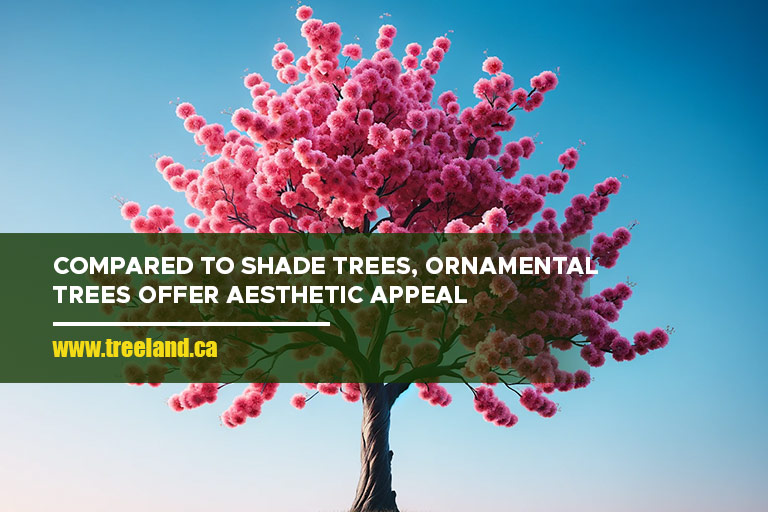Trees are the silent guardians of outdoor spaces, infusing life, beauty, and balance into our environments. They are instrumental in fostering a healthy ecosystem and elevating the aesthetic appeal of any landscape.
The pivotal decision homeowners face is choosing between shade trees and ornamental trees, each serving a unique purpose. Understanding the distinctions between these types is essential for making an informed choice that aligns with personal preferences and landscaping needs.
The Purpose of Your Tree
Before selecting a tree, it’s important to define the primary goal. Do you need a tree to provide shade, enhance the beauty of your space, or both? Shade trees are mainly grown for their large canopy that offers extensive coverage and cooling effects.
Ornamental trees, in contrast, are chosen for their aesthetic appeal, characterized by their distinctive flowers, leaves, and overall form. The choice between the two largely depends on the intended purpose of the tree in your landscape.
Shade Trees: The Cool Canopy

When considering shade trees, two key characteristics stand out. They are typically large in stature and feature a wide canopy. This extensive coverage is not just for aesthetics; it serves a functional purpose by providing significant shade. This is especially beneficial during the warmer months, as the shade cast by these trees plays a crucial role in cooling both your home and outdoor areas. However, before deciding on a shade tree, there are several important factors to consider.
- The tree’s mature size is a primary concern, as it must fit comfortably within your space without causing any obstruction or damage.
- The root system also plays a critical role. Some trees have extensive root systems that can interfere with underground utilities or the foundation of structures.
- The amount of care and maintenance the tree will require is an important aspect. Some shade trees may need regular pruning and care to maintain their health and appearance.
By carefully considering these factors, you can ensure that your choice of a shade tree will be well-suited to your space and lifestyle, offering not just aesthetic value but also functional benefits.
- Popular Varieties of Shade Trees
Here are 3 of its top varieties:
- Maple Trees: Known for their large canopy and vibrant fall colours.
- Oak Trees: Appreciated for their longevity and sturdiness.
- Elm Trees: Valued for their large, dense canopy.
Ornamental Trees: Beauty in Every Branch

Ornamental trees are celebrated for their aesthetic attributes, which include their distinctive shapes, vibrant flowers, and visually appealing bark. These features make them a favourite for enhancing the visual appeal of any landscape.
Many ornamental trees also boast spectacular flowering patterns and an array of colours, adding a burst of beauty to their surroundings. However, when selecting an ornamental tree, several considerations are crucial.
- The size of the tree is important, as it should complement the space without overwhelming it.
- The flowering season is another aspect to ponder, as different trees bloom at various times, and this can impact the aesthetic you’re aiming for throughout the year.
- Maintenance requirements cannot be overlooked. Some ornamental trees may require more care, such as regular pruning, to maintain their shape and health.
By taking into account these factors, you can ensure that your choice of an ornamental tree not only enhances the beauty of your space but also fits your lifestyle and gardening capabilities.
- Popular Varieties of Ornamental Trees
Here are 3 popular varieties:
- Cherry Blossom Trees: Famous for their beautiful pink blossoms.
- Dogwood Trees: Known for their stunning flowers and attractive bark.
- Japanese Maple Trees: Valued for their distinctive leaf shapes and colours.
Balancing Act: Trees that Offer Both
For those seeking both practicality and beauty in their landscaping, certain trees offer a harmonious blend of shade and aesthetic appeal, essentially providing the best of both worlds. Notable examples of such trees include specific species of maple and birch.
For instance, the Sugar Maple (Acer saccharum) is a prime example from the maple family. It’s celebrated for its stunning fall foliage that bursts into vibrant shades of yellow, orange, and red, while also providing a substantial canopy for shade.
In the realm of birch trees, the River Birch (Betula nigra) stands out. This species is known for its visually striking, peeling bark with varied colours and its ability to grow tall and wide, offering significant shade.
These trees not only provide the cooling benefits of a shade tree but also boast the ornamental qualities that make a garden visually appealing. However, when choosing a tree that offers these dual benefits, it’s important to consider the balance between its shade coverage and ornamental features.
Some trees might offer more extensive shade but less decorative appeal, or vice versa. The overall care and maintenance requirements of these hybrid options should also not be overlooked. Ensuring that the tree’s needs align with your ability to provide care will result in a more satisfying and sustainable choice, allowing you to enjoy the dual benefits these trees offer to the fullest.
Planting and Care Tips
When planting both shade and ornamental trees, selecting the right location is crucial. This involves considering factors such as the amount of sunlight the area receives, the type of soil present, and the amount of space available for the tree’s growth. Here are important tips in tree care:
- It’s important to ensure that the tree has enough room to expand both above and below ground.
- Proper planting depth is also vital; trees planted too deeply or too shallowly can suffer from stunted growth or instability.
- Regular watering, especially in the early stages of growth, is essential to help the tree establish its root system.
- Once the tree is planted, ongoing maintenance is key to ensuring its health and vitality.
- Regular pruning helps maintain the tree’s shape, encourages healthy growth, and can prevent the spread of diseases.
- Monitoring the tree for signs of pests and diseases is crucial, as early detection often leads to more effective treatment.
- Providing the tree with necessary nutrients through fertilization will also support its growth and overall health.
By adhering to these general guidelines and maintenance tips, both shade and ornamental trees can thrive, enhancing the beauty and functionality of your outdoor space.
Whether you choose a shade tree or an ornamental tree depends on your specific needs and preferences. Remember to consider the characteristics of each type and how they align with your goals for your outdoor space. Check out the maple trees for sale in Toronto for a quality addition to your landscape. If you need further assistance or wish to explore a wide variety of trees, reach out to Caledon Treeland today at 905-880-1828. We can help you make the perfect choice for your space.

